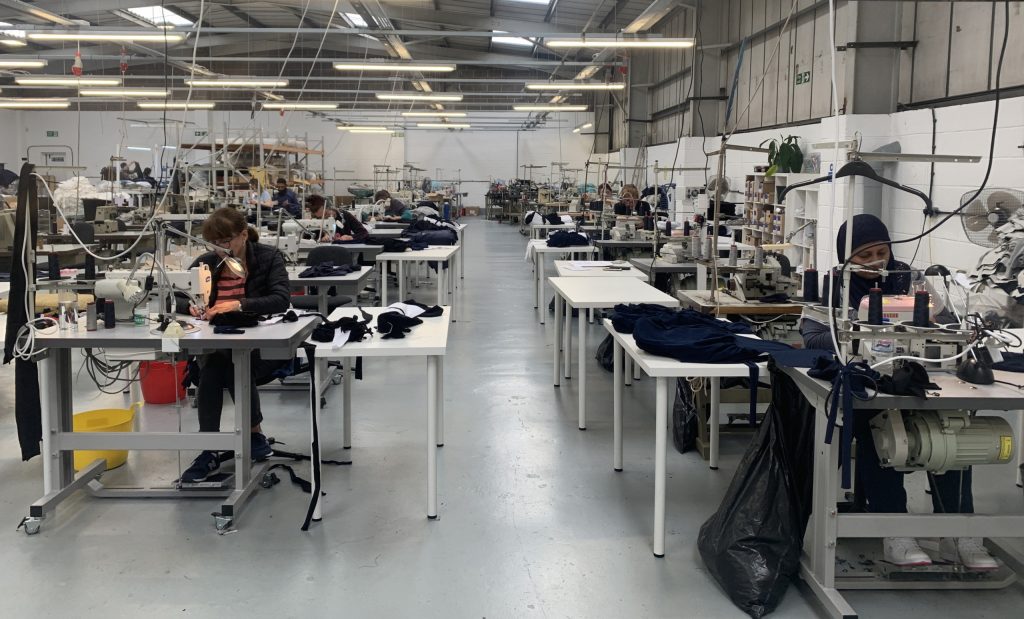Sourcing a UK factory can be hard work and there are a number of barriers that you may face.
Possible barriers
- Language and terminology being used that you are perhaps unfamiliar with.
- Factories not having websites or any internet presence.
- Difficulty getting hold of the decision maker.
- Not being prioritised as your quantities may be smaller than established brands.
- Lack of relationship with the factory.
- Unclear of what questions to ask and what information to provide.
- Lack of knowledge if the factory in question has the skill and capability to produce your product.
- Unable to provide target prices if you haven’t worked in the industry before.

Overcoming barriers
- MOQ = Minimum Order Quantity. CMT = Cut Manufacture and Trim Factory – this means you supply all the fabrics, patterns and trims to the factory, who then make the garment for you. When stating your quantities, specify “per style, per colour”. Per style – a new garment design is called a style. Any colourways or print design on the garment is treated as a new colourway. Usually this term is inclusive of sizing e.g. 50 units per style per colour – broken down to 5 sizes.
- Many established factories do not have websites and can be difficult to find. Some have a landing page that isn’t updated often. Don’t be put off – the best thing to do is visit factories to get a real sense of who they are and what they can do. Some have attempted to produce databases of UK Clothing factories however as factories come and go – these lists become redundant quite quickly. The most common database is Let’s Make It Here
- Often, factories in the UK are SMEs and the business owners are active within the day to day running of the business – working on machines or dealing with client visits. This means that they can often be difficult to pin down and get answers from. Persistence is key here!
- New start-ups and smaller brands often work to the MOQ – in the UK, as a standard, this is around 50 – 100 units. As a rule of thumb, the smaller the order, the less profit the factory makes and therefore naturally they are going to prioritise the larger orders. To overcome this, make sure you are organised and do not complicate, confuse or change your order. If the factory can see that you are serious and see the potential for future work, they will begin to prioritise your work. This takes time and relates to the next point.
- A lack of relationship between factory and brand is another challenge. Make sure you aim to work with a factory as a partner so that you can build up a relationship and all have the same objective in mind. This makes for a great working relationship and can create something really special. This takes time and won’t happen over night but it is well worth the time investment.
- Be clear what you are wanting from the factory before you approach them. Have your quantities ready, your styles per colour and know when your deadlines are. Make sure your deadlines are achievable and realistic e.g. within 3-9 months, not within 1 month. It is also important to have some idea of pricing. We’ll cover this in a future blog. You may also want to ask what accreditations the factory have, see a copy of their terms of business and understand what their payment terms are.
- Try to do some primary research on this first. If the factory has a website, they often have examples of work they have produced or a list of the garments they can work with. Factories usually specialise in one area, therefore you are unlikely to find a factory that can produce jersey t-shirts, woven shirts and knitted jumpers. You will therefore need to find multiple factories to cover the different garments you have in your range. If you are unsure of what the capabilities are of a factory, ask this in your first correspondence. This ensures you only speak to them about the garments that are relevant for them.
- As a target, you want to aim for a 250% mark-up on your garments. If the factory make your t-shirt for £5, you would then add 250% on to get your selling price of £12.50. However, if you are planning to wholesale your garments into retail, they will want a markup too. If you sold the t-shirt to retail for £12.50, they would retail for approx. £31.25. When you know your retail price, you can work backwards to determine what you production price needs to be.
If you are facing any challenges sourcing factories, please get in touch. We would be happy to help you overcome these challenges.







